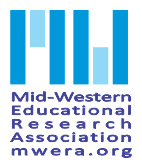Keywords
Other Health Impaired (OHI), Funding, Special Education
Abstract
Since 1978, the Education for All Handicapped Children’s Act (now IDEA) committed Congress to provide 40 percent of the average per pupil spending to educate children with disabilities. While states have used a variety of special education funding formulas to attempt to meet the needs of children with disabilities, the funding has never approached the 40 percent benchmark, forcing states to creatively supplement federal dollars. The purpose of this study was to examine the relationship between school funding formulas and identification of students with other health impairment (OHI). The relationship between special education funding formulas and per pupil spending (PPS) was also examined. Results indicated no formula was predictive for identification; however, PPS highly correlated to OHI identification rates. Better understanding of special education funding formulas and how they impact OHI diagnosis frequency and per pupil spending (PPS) is important for special education policymakers at the state and federal levels.
Recommended Citation
Uhing, Brad M. and Powers, Michelle
(2022)
"Effects of State-Level Funding Systems on Rates of Students Identified as Other Health Impaired,"
Mid-Western Educational Researcher: Vol. 34:
Iss.
1, Article 3.
Available at:
https://scholarworks.bgsu.edu/mwer/vol34/iss1/3


